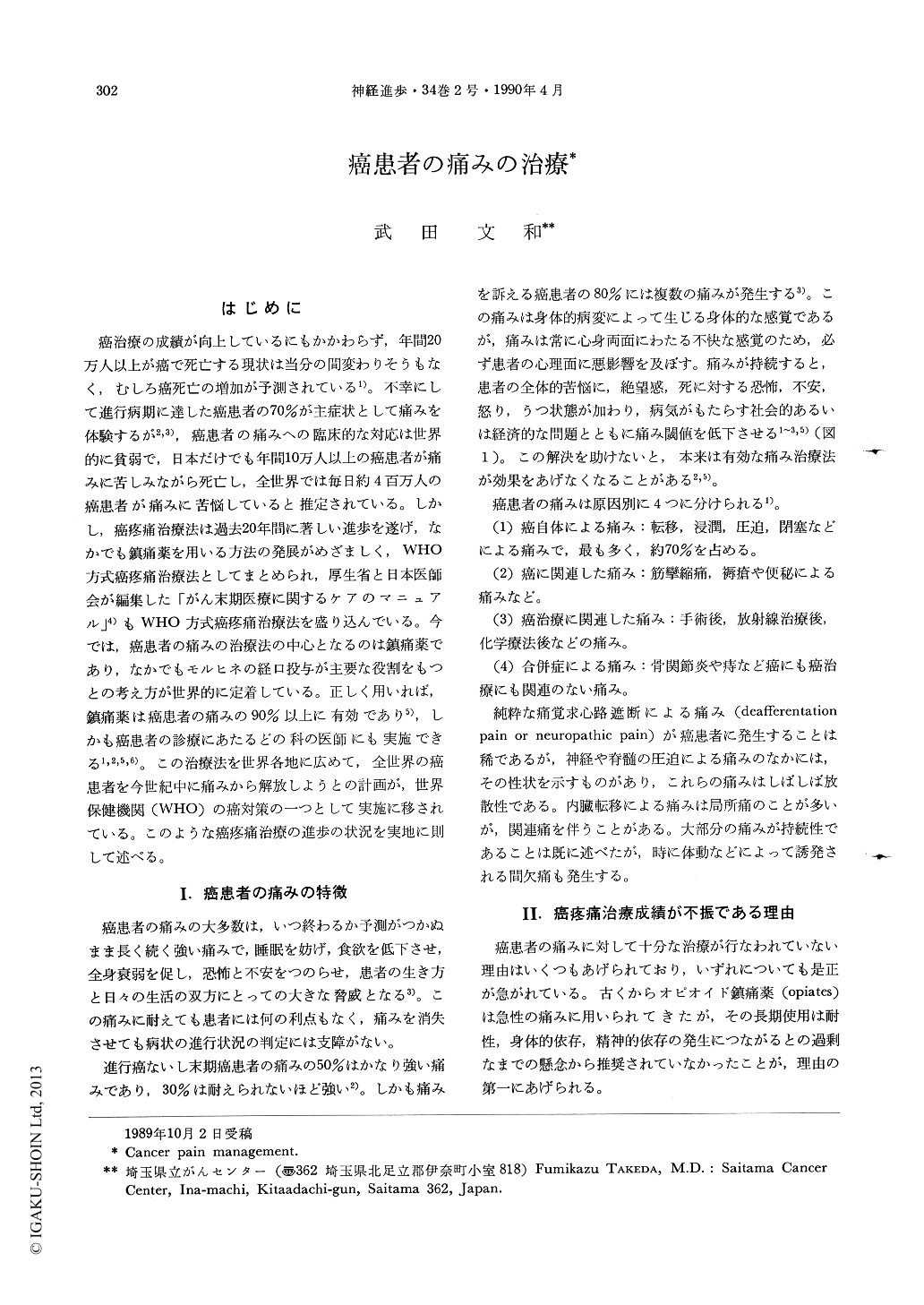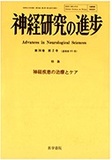Japanese
English
- 有料閲覧
- Abstract 文献概要
- 1ページ目 Look Inside
はじめに
癌治療の成績が向上しているにもかかわらず,年間20万人以上が癌で死亡する現状は当分の間変わりそうもなく,むしろ癌死亡の増加が予測されている1)。不幸にして進行病期に達した癌患者の70%が主症状として痛みを体験するが2,3),癌患者の痛みへの臨床的な対応は世界的に貧弱で,日本だけでも年間10万人以上の癌患者が痛みに苦しみながら死亡し,全世界では毎日約4百万人の癌患者が痛みに苦悩していると推定されている。しかし,癌疼痛治療法は過去20年間に著しい進歩を遂げ,なかでも鎮痛薬を用いる方法の発展がめざましく,WHO方式癌疼痛治療法としてまとめられ,厚生省と日本医師会が編集した「がん末期医療に関するケアのマニュアル」4)もWHO方式癌疼痛治療法を盛り込んでいる。今では,癌患者の痛みの治療法の中心となるのは鎮痛薬であり,なかでもモルヒネの経口投与が主要な役割をもつとの考え方が世界的に定着している。正しく用いれば,鎮痛薬は癌患者の痛みの90%以上に有効であり5),しかも癌患者の診療にあたるどの科の医師にも実施できる1,2,5,6)。この治療法を世界各地に広めて,全世界の癌患者を今世紀中に痛みから解放しようとの計画が,世界保健機関(WHO)の癌対策の一つとして実施に移されている。このような癌疼痛治療の進歩の状況を実地に則して述べる。
Cancer pain has been commonly undertreated and frequently neglected as a public health problem. Even in the medically affluent areas of the world, 50 to 80% of cancer pain are not satis-factorily treated. However, for the past several years, health care professionals in all part of the world have been increasingly making efforts to correct this problem. It needs to be emphasized that relief is possible for the cancer patients in the world who each day suffer unrelieved pain. Analgesic drugs are the mainstay of cancer pain management, since this approach can be implemented on a worldwide basis. Five key concepts underlying the use of analgesics in cancer pain management are “by mouth”, “by the clock”, “by the ladder”, “by the individual” and “attention to detail”. These concepts are based on the premise that doctors should learn how to use a few potent drugs well.

Copyright © 1990, Igaku-Shoin Ltd. All rights reserved.


